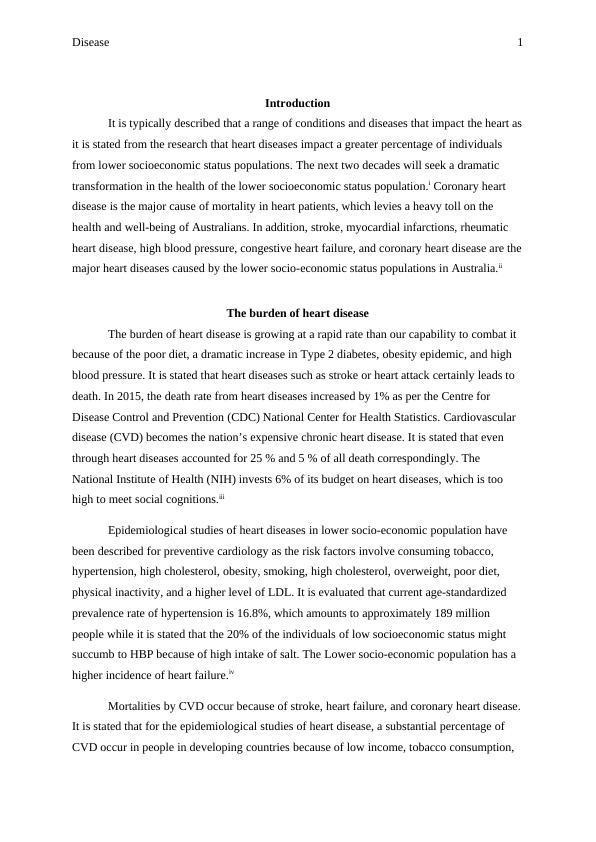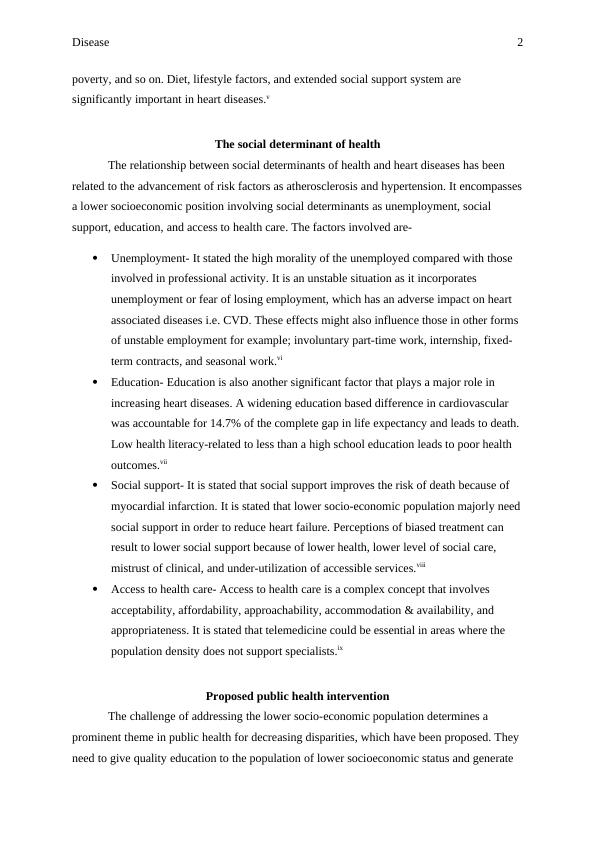The Burden of Heart Disease in Lower Socioeconomic Status Populations
Analyse the impact of social, environmental and behavioural factors on the health of different populations and develop effective health promotion interventions.
7 Pages1074 Words89 Views
Added on 2022-11-29
About This Document
This article discusses the burden of heart disease in lower socioeconomic status populations, including the impact of risk factors, mortality rates, and proposed public health interventions. It explores the relationship between social determinants of health and heart disease, such as unemployment, education, social support, and access to healthcare. The article concludes with the importance of addressing disparities and involving other sectors, such as education, in public health interventions.
The Burden of Heart Disease in Lower Socioeconomic Status Populations
Analyse the impact of social, environmental and behavioural factors on the health of different populations and develop effective health promotion interventions.
Added on 2022-11-29
ShareRelated Documents
End of preview
Want to access all the pages? Upload your documents or become a member.
Social Determinants of Health
|7
|1220
|297
Coronary Heart Disease in Australia
|6
|1083
|395
Prevalence of Cardiovascular Diseases in Elderly People in Australia
|15
|3653
|295
Cardiovascular Disease as an Alarming Health Issue among Obese Young Adults Population of Australia
|20
|4622
|170
Health Determinants Effect on Cardiac Disease Essay
|10
|3289
|108
Report ‐ Social Determinants of Health
|4
|2091
|69



